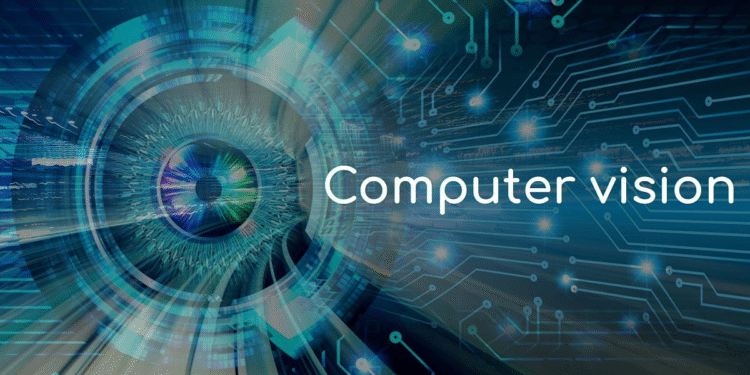In an age of data-driven artificial intelligence (AI), the success and accuracy of a computer vision model are based on the quality and applicability of data for the problem. A Computer Vision Development Company typically runs into the issue that out-of-the-box datasets do not work for unique client use cases, thus requiring the creation of custom datasets to address real-world use cases. The custom datasets may allow the company to bring their creative ideas to life and give businesses a competitive advantage through the automation of visual processes, predictive insights, and scaling of AI in ways generic datasets cannot. This guide outlines practical and concrete strategies and lessons learned over years of development and production projects, aimed to help you build, scale and future-proof your computer vision data pipelines.
Why Custom Datasets Matter in Computer Vision?
Generic datasets such as ImageNet, COCO, and others can be helpful in the early stages of research, and provide standardized benchmarks to gauge progress. When it comes time for deployment, it is typically necessary for data to represent what your AI application will face in the real-world, be it environmental, objects, or conditions.
For example, your AI application could be insight generation for medical imaging, a monitor for retail shelf space, or a defect detection system for industrial applications. The public datasets that you would likely rely on while developing your AI application would not encapsulate the full variation, context, or subtlety found within your scenario.
Custom datasets have their unique set of benefits:
- Relevance to real environments: Capturing the representation of your actual operating conditions.
- Ownership and control: You have complete rights over updates, scope, and usage of model training.
- Flexibility: You can change your dataset as conditions and needs change, or new scenarios arise.
- Competitive advantage: Custom datasets can provide higher accuracy, robustness, and fewer unknowns for your model.
Your investment in a custom dataset will ensure that your AI is smarter, safer, and more aligned to your business objectives.
Steps to Building a Custom Dataset for Computer Vision
1. Define the Problem Clearly
Before you collect data, be clear about the precise business problem and technical goals you wish your computer vision solution to address.
Ask yourself the following questions:
- Is this for object detection, classification, segmentation, anomaly detection, etc?
- What specific objects, defects, or behaviors we need to capture?
- What are your business constraints; accuracy targets, latency, edge deployment, privacy, etc?
A clear problem definition ensures that the dataset is purpose-built, and helps avoid wasted effort or scope creep.
Checkpoint: Try describing your data needs in one sentence. (Example: “Detect and classify damaged goods in images of a warehouse taken in varying lighting conditions”). What would yours be?
2. Plan Data Collection Strategically
Strategizing your data collection involves balancing coverage, cost, and risk. Consider:
- Sources (where will you collect images or videos? Field deployments, cameras, mobile devices, drones, etc.),
- Sampling (how frequently and under what conditions—weather, lighting, seasons, etc.?),
- Volume (what is the minimum size you want for your datasets per class/object),
- Permissions (who owns the data, do you need consent, do you have any restrictions on the usage of the data).
A practical consideration is to visualize the workflow in a map, what locations, times, and devices you will be collecting/using. This map may help determine if there are any blind spots in your coverage.
3. Ensure Data Quality and Consistency
Images of a high standard (clean, correctly exposed, sharp) can help deliver better performance from the algorithm, while observing the same formats and standards can mitigate problems with training. Your quality checklist may contain:
- Standardized resolutions and aspect ratios
- Consistent orientation (no accidental rotations of images)
- No duplicates
- No corrupted, damaged, or heavily blurred examples
Pro Tip: You can implement some quality checks with initial automation using scripts for resolution, format and image sharpness. This will help reduce some of the early manual screening.
Question: If your samples were of poor quality, what do you think could happen to your model? Take a guess, and then I can add confirmation or clarification.
4. Label and Annotate Data Correctly
Annotation converts raw data to utilizable training samples. You can classify data in the following ways:
- Classification labels: 1 label per image
- Bounding boxes: draw a box around the item of interest
- Segmentation masks: highlight where in the pixel or image smallest details are (very fine detailed tasks)
- Keypoint labeling: mark data such as specific points, bone reflections, faces, products of assembly etc.
Accuracy here is important if the labeling is not accurate or sloppy, the model may learn the wrong details and you will waste time training. Use in-house annotators that are trained in the subject area, or external partners where you can vet. Double-checking work and automated validation of labels will help catch errors sooner rather than later.
Tip: Consider tools like LabelImg, CVAT, or commercial options to streamline and standardize the annotation process.
Activity: If you wanted to label images of defective products, what process would you take of (classifying, bounding box, segmentation) and why?
5. Handle Data Imbalance and Bias
When certain classes are under-represented (even at the level of agent categories, such as having only a couple images for rare defects), an imbalance occurs, which will constrain generalization. Biases can happen if a certain background, angle, or light condition, which occurred a lot in a model’s training dataset, happened to be in the region where the model was tested.
To help address this:
1. Apply augmentation methods (flips, rotations, scale etc.) to artificially bolster the size of the minority classes
2. Search out rare situations for data collection
3. Follow class distribution statistics
For review: Try to make a bar chart that shows the counts of each class, do you notice a pattern of imbalance?
6. Protect Privacy and Comply with Regulations
Computer vision projects will often interface with privacy and laws. This is most important when involving faces, license plates, medical scans, or images taken in the workplace.
- Anonymize images by blurring faces or sensitive identification
- Explicit written consent where necessary
- To abide by laws like GDPR, CCPA, or HIPAA depending on the focus of your project and your location
AI Development Services within regulated industries can help ensure safety in practice and implementation audits in compliance to regulation for privacy.
Check-In: What are some privacy risks that you can think of associated with using a camera system in a public space? Name one to start and discuss solutions next.
7. Split, Store, and Maintain Your Dataset
The lifecycle of your dataset does not finish at the stage of collection. It requires secure storage, logical splits, and maintenance over time:
- Splitting: Using stratified sampling (maintaining balance across classes), create training, validation, and test splits
- Storage: Use cloud storage or appropriate repositories (with access protocols for appropriate access)
- Versioning: Preserve histories of any changes to the dataset, as original impressions may not exist when you use more data to retrain the model.
- Expansion: Regularly collect new samples as they become available to sufficiently capture concept drift and changes to the environment.
Good hygiene for your dataset supports scalability and model updates over time.
Lessons from Real-World Projects
The reality of custom dataset paths are great practical potential challenges and “nuggets” of information that can be generalized. Now, let’s get into five lessons for consideration:
1. Context is Everything
Data collected without sufficient context often do not translate well into a working system. For example, in a project that automated warehouse operations, the vision models were trained on images of generic shelf products, which caused them to “fail” when they were brought to life in the local packaging and lighting conditions. Once the data collection was adjusted to represent the operational reality, the models demonstrated significant improvement in accuracy.
Takeaway: Always collect and label data with the end use case in consideration – the environment, background, device, time of day, etc.
2. The Quality of Annotations Determines Outcomes.
An e-commerce client experienced low recognition rates because the original annotation guidelines were not detailed enough for the labelers – the labelers did not consistently interpret “defective.” After one update, then another, the project team established that clear annotation rules, including visuals, eradicated most errors, and made this process a simple scale or retraining task.
Hint: Better to spend time and money on annotator training and writing standards than to have a recurring problem or untrustworthy model verification. Regular audits of annotation processes and results are also a best practice here.
3. Diverse Data Supports Robust Models.
Robust computer vision models thrive on diversity in the background, angles, time of day, and environmental conditions – e.g. a day and night. A computer vision team for an automotive use case found that when they supplemented an active dataset with images from night, rain, and crowded conditions, encapsulated half of the classification errors in real-world tests.
Advice: Always follow up with the consideration – does your data represent the full spread of real-world scenarios that you expect? If it does not – make the decision to prioritize expanding or continuing to augment your dataset.
4. Iteration Beats Perfection
No dataset is truly “finished”. There is always ongoing improvement through repeated collecting feedback, retraining with new mistakes in the data, and broadening coverage. Teams who promote and use iteration, instead of “paralysis by analysis” will get their models into production faster, and learn from frequent real-world validation.
Best Practice: Short learning loops: Deploy, collect errors, new data, retrain, repeat.
5. Collaboration is Key
Building a dataset is a team effort – across engineers, domain experts, annotators, and even end-users. As an example, in a project we did focused on medical imaging, the big breakthrough came when we had radiologists participate in a “design session” to help define features that the non-radiologists would not have recognized. The rich feedback resulted in more detailed annotations that substantially improved model performance.
Key Insight: Include stakeholders early – and often: collaborative communication will reveal things we might otherwise miss.
Quick Quiz: Who would you invite to your data annotation sessions for the greatest impact?
The Future of Custom Datasets
Looking ahead, several trends will redefine how custom datasets are built and enriched:
Synthetic Data Generation
Generative models (like GANs) or simulation engines can create synthetic data to augment real datasets, particularly for rare or difficult-to-capture situations. For example, AI systems can generate different views, lighting, or object poses, allowing for comprehensive training from limited “real” scenes.
While synthetic data can speed up model development and help fill in “coverage gaps,” it is critical that users verify that the generated samples actually represent real-world statistics and the model is not aligned to synthetic artifacts.
Active Learning
With active learning, the model identifies ambiguous or low confidence samples in the wild, which are annotated to improve performance incrementally. This “smart sampling” approach ensures annotation time is spent on the most meaningful images and effectively grows the data as new cases, or edge cases, arise.
Federated Data Collection
Federated learning approaches enable data collection associated with model training across decentralized data sources, never necessitating local data to leave the local environment, to ensure privacy and collaboration. Particularly useful for medical, financial, or sensitive imagery, federated approaches maintain central oversight of data while ensuring distributed security, enabling large-scale, collaborative AI applications without breaking privacy trust.
Final Thoughts
The successful implementation of computer vision AI relies heavily on constructing a custom dataset. From understanding the problem, to collecting data, to annotating, to data management, the dataset governs virtually everything that happens next in the process.
Utilizing the services of seasoned experts, who focus on AI Development Services capabilities, to plan data acquisition, annotation and compliance will ultimately provide datasets that provide outcomes compelling for the business objective. Similarly, employing Machine Learning Development Services can further reduce the frustrations and time of building, retraining and deploying machine learning models to meet increasingly complex datasets.
In summary, creating a customized dataset is strategic, and is both an art and science based on engagement, inquiry, ethics, and a commitment to quality.














